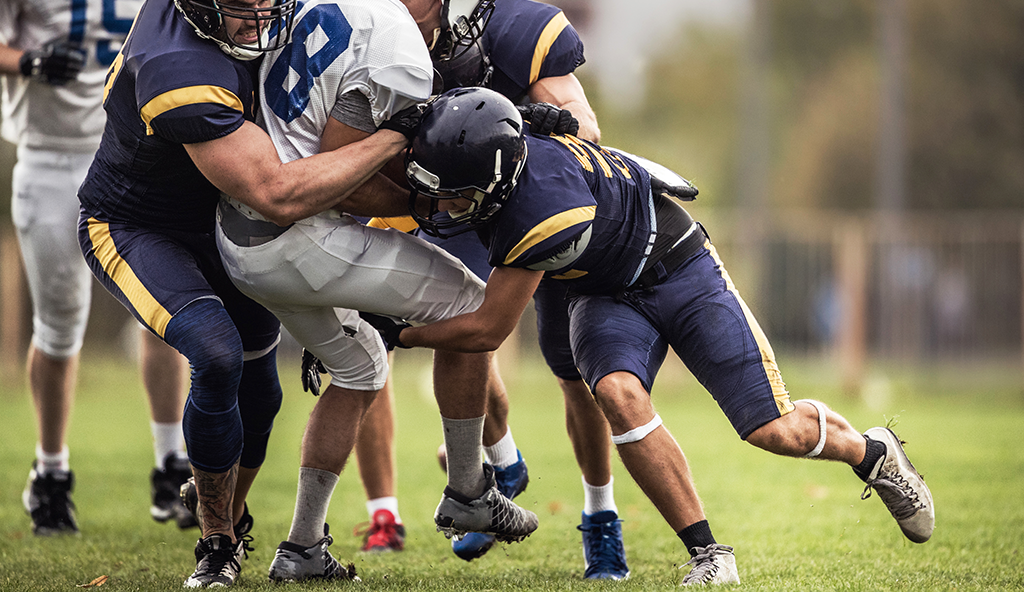Injury Overview
The knee is stabilized and is able to function properly because of four major ligaments which allow the knee to perform movements such as walking, pivoting, running, and cutting. These ligaments can be inside the knee joint (intra-articular) or on the outside of the knee joint (extra-articular). The Anterior Cruciate Ligament (ACL) and the Posterior Cruciate Ligament (PCL) are intra-articular and called “cruciate ligaments” because they cross over each other inside the knee joint. The Medial Collateral Ligament (MCL) and the Posterolateral Complex (PLC) are extra-articular and provide side-to-side stability.
All four ligaments work together during walking and sporting activities. Each ligament has specific functions and functions which overlap with other structures. When any of these ligaments are stressed beyond its normal strength, a tear can occur. In serious accidents, damage to more than one ligament is possible. This is referred to as a multi-ligament knee injury and requires appropriate medical attention.
Symptoms
Multi-ligament knee injuries present acute symptoms that are often more intense than typical isolated ligament tears. Immediate pain, bruising, swelling, and difficulty moving the knee will be present. Nearby blood vessels and nerves may also be affected causing numbness, tingling, a cooling sensation, and overall weakness. Multi-ligament knee injuries are serious and require immediate medical evaluation.
Diagnosis
A thorough examination, X-rays, and an MRI are necessary when more than one ligament is suspected to be injured. If a dislocation has also occurred, reduction (placing it back into its proper position) and stabilization are necessary as soon as is safely possible. In many cases, dislocations are reduced on a playing field or in an emergency room upon arrival. Sometimes, special studies to evaluate blood vessels are necessary, and in cases of vascular injury, a consultation with a vascular surgeon will be necessary.
Treatment
In the majority of cases that involve multi-ligament knee injury, a surgery will be needed. This is considered a complex knee surgery and may involve more than one technique. Surgery may be delayed to allow swelling to decrease. Depending on which ligaments are injured, Dr. Anz will focus on restoring stability to the knee by performing a repair or reconstruction of all torn ligaments. A graft from either the patient or a donor will often be needed. Sutures, anchors, and screws are used to reattach the injured ligaments or correctly position and secure grafts.
Post-Operative
Dr. Anz will prescribe a thorough and attentive rehabilitation program following a multi-ligament knee surgery. Restrictions regarding motion and weight bearing are important and tailored to an individual’s unique injury. It is important for patients to achieve full knee extension as soon as possible. This often involves an early focus on the quadriceps muscle. Dr. Anz will work as a team with the patient and therapist to ensure that a full recovery can be reached and individualize the rehabilitation process.
—
For more information on multi-ligament knee injuries, or for additional resources on knee ligament reconstruction surgery, please contact the Gulf Breeze, Florida orthopedic surgeon, Dr. Adam Anz located at the Andrews Institute. vc




